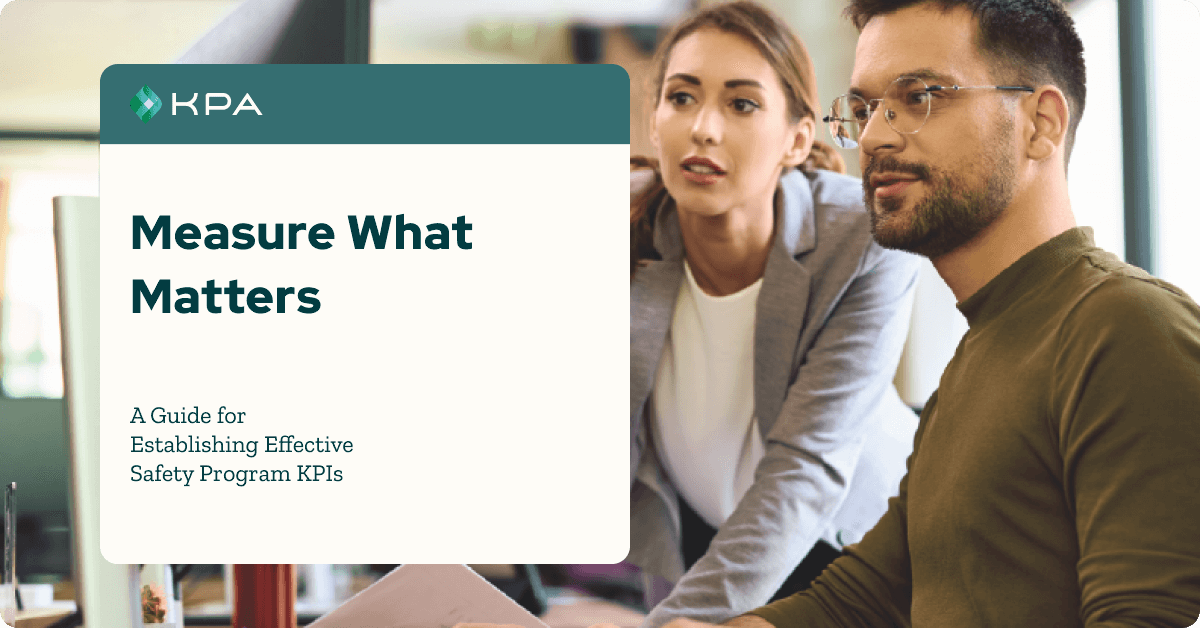Achieving a truly safe workplace extends beyond compliance—it requires a strategic approach focused on selecting and improving key performance indicators (KPIs) aligned with your organization’s safety goals.
But how do you know how to effectively measure what matters in your safety program? We’ve got 20 questions that should help guide your way. By asking yourself these targeted questions, we’ll uncover strategies for ensuring your safety metrics are relevant, practical, and capable of driving significant improvements in workplace safety.
Whether you’re developing a new safety program or refining existing metrics, the insights you gain from these questions will guide you towards a more effective and impactful approach.
Alignment with Safety Objectives
- Do the KPIs I’m considering align with our overarching safety objectives?
- How do they support our vision of a safe workplace?
SMART Criteria
- Are the KPIs I’ve selected or am planning to select SMART (Specific, Measurable, Achievable, Relevant, Time-bound)?
- Can I clearly define and measure progress towards each KPI?
Balance of Indicators

Your guide for establishing effective safety program KPIs. As organizations continually strive to improve their safety standards, the role of Key Performance Indicators (KPIs) in shaping an effective safety program is more crucial than ever.
Employee Engagement
- How do the chosen KPIs encourage employee participation and engagement in our safety program?
- Do they empower employees to take an active role in safety measures?
Practicality and Relevance
- Are the KPIs practical and relevant to our specific workplace context?
- Do they address the unique risks and safety challenges we face?
Avoiding Unintended Consequences
- Have I considered the potential for unintended consequences in choosing these KPIs?
- How can I mitigate such risks?
Measuring the Right Things
- Am I measuring things because they are easy to measure, or because they genuinely contribute to our understanding and improvement of workplace safety?
Continuous Improvement
- How will I use the data gathered from these KPIs to drive continuous improvement in our safety program?
- What mechanisms are in place for regularly reviewing and adjusting KPIs?
Cultural Fit
- Do these KPIs fit within the existing culture of our organization?
- How can they help to foster a culture of safety?
Technology and Tools
- Am I leveraging the best tools and technology available for tracking and analyzing KPIs?
- Could new tools or software enhance our ability to measure what matters in our safety program?
Reflecting on these questions can help you refine your approach to measuring safety performance, ensuring that their KPIs are not only effective but also actively contribute to creating a safer workplace.
Monitoring Safety Program KPIs is easier with solid EHS software in your team’s hands.
KPA simplifies data visualization and reporting, giving users easy access to actionable insights into their EHS program performance. Your data is presented in real-time, so no delay or extra steps are required to access the information. The dashboards are configured based on features tailored to your business’s unique requirements, giving you the power to make informed decisions that impact workplace safety.
Let KPA show you how to take a data-driven approach to safety.
Related Content
Explore more comprehensive articles, specialized guides, and insightful interviews selected, offering fresh insights, data-driven analysis, and expert perspectives.
